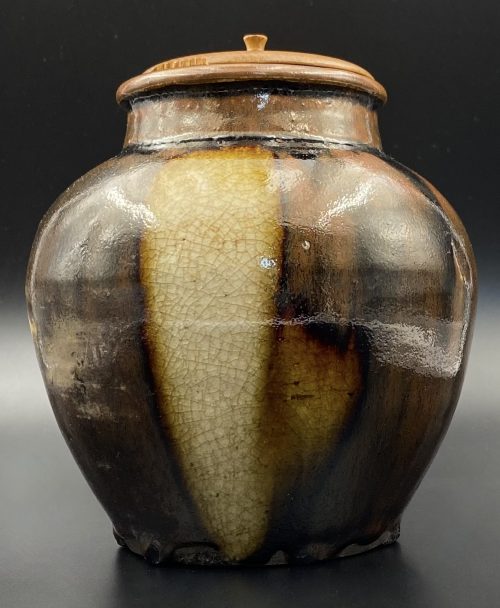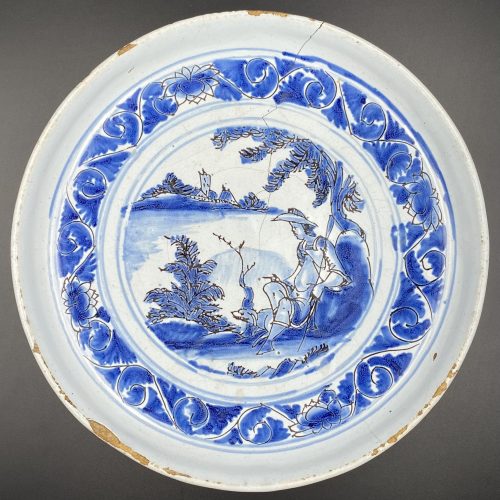Iron tsuba of round form with two
ebi (lobster) on
omote (obverse side) and
shika (deer) among scattered
momiji (maple leaves) on
ura (reverse side) motif in brass
takabori (high relief)
suemon-zōgan. Traces of lacquer. Unsigned.
Late Muromachi / Momoyama period (late 16th / Early 17th century).
Dimensions: 69.0.6 mm (H) x 69.6 mm (W) x 3.4 mm (T,
seppa-dai). Weight: 92.6 g.
Illustrated at: The Lundgren Collection of Japanese Swords, Sword Fittings and A Group of Miochin School Metalwork. Christie's Auction: Tuesday, 18 November 1997, London. Sales "GOTO-5881". Christie's, 1997. - #2 at page 7.
Provenance: The second John Harding; The Lundgren Collection.
Description at Christie's: "The iron plate depicting two lobsters in takabory and brass takazogan, the reverse similarly decorated with deer among scattered maple leaves, square mimi, late Muromachi / early Momoyama period (late 16th/early 17th century) Diameter 68 mm, mimi thickness 4 mm. Provenance: The second John Harding."
Also at: JAPANESE SWORD-FITTINGS & METALWORK IN THE LUNDGREN COLLECTION. Published by Otsuka Kogeisha, Tokyo 1992. № 134. Description on page 173: Sword guard with design of shrimps in inlay (scarlet [sic] maple leaves and deer on the reverse side). Unsigned.
Heianjō inlay school. Vertical 6.85 cm, horizontal 6.90 cm, Th. of rim 0.40 cm. Iron.
Taka-bori relief and brass inlay.
Momoyama period, 16th - 17th century.
According to Merrily Baird, maple leaves, especially if paired with the deer, allude to autumnal tradition of Japanese aristocracy of viewing the seasonal changes of color in the
Nara area. The lobster is typical Japanese ebi, - it lacks prominent claws, and has a spiny shell. As a symbol of longevity and good fortune, lobster is a staple of New Year's decoration.




















